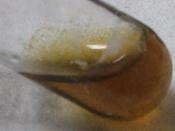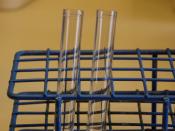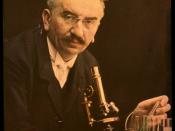Elizabeth Au (1)
Serena Chan (3)
Sharon Chan (4)
Christy Chan (5)
Biology Lab Report
Investigation of the effect of metal ions on enzyme activity
Objective
To study the effect of two heavy metal ions, lead (II) ions and silver ions on the enzyme activity of invertase.
Introduction
Hypothesis:
The rate of enzyme reaction of invertase decreases and the reaction eventually stops as the heavy metal ions inhibit the enzyme reactions.
Biological principle:
Heavy metal ions are non-competitive inhibitors. They do not compete with the substrates for the active sites of enzymes. They attach to other parts of the enzyme molecules and cause changes in the structure of the active site. The substrate molecules can no longer bind to the active sites and the rate of enzymatic reaction decreases. Therefore, they prevent the enzyme reactions from taking place.
Independent Variable:
-Presence or absence of metal ions in the solution
-There are two solutions with two different metal ions and two are replaced by distilled water without metal ions.
Dependent Variable:
-The effect of metal ions on the enzymes activity of invertase
-It can be measured via Benedict's test by the colour change and the quantity of the precipitate formed.
Controlled Variable:
-The amount of the invertase in each solution
-The time of the reaction take place
Control set-up:
Replace the metal ions in the solution by the same volume of distilled water.
Assumptions:
All reducing sugar has reacted with B solution, invertase works well in the given pH and temperature.
Materials and apparatus:
10mM lead (II) nitrate
10mM silver nitrate
50g/L sucrose solution
0.03g/L invertase solution
Benedict's solution
6 test tubes
Measuring cylinder
1 beaker
Bunsen Burner
Tripod
Wire gauze
Heat-proof mat
�
Procedures
Silver nitrate
0.5mL of silver nitrate solution is added to 1mL of sucrose solution and the...


